Water
We recognise that water is an increasingly precious resource and that it is essential for many of our industrial activities. Regardless of their location and the availability of water, we require our industrial assets to undertake detailed assessments of their local environmental conditions during their operation and ahead of any operational changes in their life cycle, to develop water management strategies to maximise the efficient and sustainable use of this important natural resource.
Our goal
To understand and minimise our operational water footprint and manage our activities in a way that protects our shared water resources and the ecosystems in which we are present.
Our approach
We recognise that water is an increasingly precious resource and that it is essential for many of our industrial activities. Some of our industrial assets are in water-stressed areas and share access to water with other local water users. Conversely, other industrial assets need to manage surplus water, which may involve dewatering activities and flood protection measures.
Regardless of their location, our industrial assets are required to undertake detailed assessments of their local environmental conditions during the operation and any operational changes in their life cycle, and to develop water management strategies that maximise the efficient and sustainable use of this important natural resource.
Stakeholder concerns around the ongoing availability of water, security of access and the potential for water contamination have increased over the past decade in response to extreme climatic events. We recognise that access to safe and clean water and sanitation is essential to the healthy functioning of ecosystems and the services they provide. We acknowledge that access to water is integral to wellbeing and livelihoods and the spiritual and cultural practices of many local communities.
Our industrial assets consult their local communities and other relevant local water users to understand local priorities and to collaborate on sustainable solutions within our water catchments.
We are committed to transparency and undertake a variety of activities to communicate effectively with our stakeholders. When appropriate, our industrial assets participate in collaborative community-based water projects and consider technology and innovation to improve their performance.
As of the end of 2024, 37% of the industrial sites that we track for our water targets are in water-stressed areas . We have finalised the assessment of material water-related risks and set local targets for our industrial assets located in water-stressed areas and we are implementing actions to reduce impacts and improve performance against these targets.
In areas with excess water, we require our industrial assets to consider increased water management requirements and associated costs, such as dewatering and water treatment prior to discharge. We require our industrial assets to identify options to reduce impacts from water, such as improving surface water management design, where feasible.
We are committed to the principles of water stewardship across our industrial assets, through the application of strong and transparent water governance, effective management of water, and collaboration with stakeholders as part of our efforts to improve our performance and achieve responsible and sustainable water use.
We work to strengthen our understanding, minimise our operational water footprint and manage our activities in a way that protects our shared water resources and the ecosystems in which we are present. We are committed to ensuring good water management is in place at our industrial assets and, based on our risk assessments, we undertake internal and external target setting, monitoring and implementation of corrective actions.
Our industrial assets use our Environment Policy and our Environment and Closure Planning Standards, which are aligned with ICMM’s Water Stewardship Position Statement and set out our requirements for water management.
Further information on our approach to water stewardship and performance is provided in the 2024 Sustainability Report and our 2024 ESG Data Book.
Water management performance
Our water indicators, metrics, and definitions consider the ICMM’s Water Reporting- Good practice guide. Additional details of our 2024 water input, output, use and consumption can be found in our 2024 Sustainability Report and our 2024 ESG Data Book.
‘Total water input‘ and ’Total water output‘ KPIs have been subject to external limited assurance under the ISAE 3000 (Revised) and ISAE 3410 Standards – see 2024 Annual Report, pages 140-142. See also 2024 Basis of Reporting. Both the 2024 Annual Report and the 2024 Basis of Reporting are available at Glencore.com/publications.
Note: For explanations regarding restatements of previous years' data refer to our 2024 ESG Data Book. As outlined in our 2024 Basis of Reporting, acquisitions are only included where they have been integrated before 1 July in the reporting year. Therefore, information relating to Elk Valley Resources (EVR) is not included in our water metrics for 2024.
Glencore water balance 2024
In 2024, our overall water input was approximately 846 million m3 (see Glencore water balance graphic above), the decrease since 2023 being primarily related to the sale of Volcan. Our industrial assets source most of their water from surface water (including rainwater/precipitation) or groundwater due to the dewatering of their mines. Additional water sources include brackish or seawater, third-party supply and residual water entrained as moisture in mined ores. Most third-party water received by our industrial assets is of low quality, such as treated wastewater, and primarily used for processing activities. During 2024, about 2% of our industrial assets’ total water input was potable water (included in third-party sources in graph below) and was mainly used for human consumption.
-
Sources of water input 2024 (percent)
-
Water input by source and region between 2022-2024 (GL)
Our industrial assets discharge and monitor wastewater in accordance with jurisdictional and/or permit requirements. Most of the water output is directed to permitted surface water points, including rivers, and seawater, which are routinely monitored. Minor amounts of water are also supplied to third parties, while about 1% of water is discharged as groundwater.
-
Destination of water output in 2024 (%)
-
Water output by destination and region between 2022-2024 (GL)
Most of our water input is sourced from water quality category 3 (low quality) and category 2 (medium quality), while water classified as category 1 (high quality) covers about one quarter of our water input – see glossary below for a full definition of categories 1, 2 and 3. Wherever possible, we use the water category that is ecologically and operationally the most appropriate option (i.e., use the lowest available quality for the required purpose) while taking other water users’ needs into consideration.
The majority of our water output represents water quality category 2 followed by category 1 and category 3.
-
Water input by quality in 2024 (percent)
-
Water output by quality in 2024 (percent)
We consume water mainly through evaporation due to operational processes, dust suppression and water storage. About 11% of our water was retained as moisture in waste or final products. Across our industrial operations, we aim to minimise the amount of water we withdraw while maximising the water we reuse and recycle. Our industrial assets are typically mature in their approach to water recycling and reuse and our data shows relatively consistent volumes recycled and reused year-on-year.
-
Water consumption in 2024 (percent)
-
Water consumption, (re)use, recycling and in storage by region between 2022-2024 (GL)
We aim to have no serious environmental incidents involving water at our industrial assets, and to prevent unplanned water discharges. Under our environmental licensing conditions, some of our industrial assets are permitted to discharge surplus water, subject to varying conditions.
We investigate significant environmental incidents and, where appropriate, work with local authorities to address any operational impacts on water sources.
Under Glencore’s Risk Management Framework and HSEC&HR Incident Management Procedure, we classify the severity of actual and potential sustainability-related incidents against a five-point scale, from negligible, to minor, moderate, major and catastrophic. To analyse and classify material business risks, we apply Glencore’s Risk Management Framework, which contains defined thresholds, to assess the combined impact of potential consequences and probability.
Based on these risk assessments, we undertake internal and external target setting, monitoring and implementation of corrective actions. Our industrial assets complete periodic reviews of their water risk assessments where required and address identified gaps. We also share lessons learnt with the wider business. These water risk assessments also help to identify water-related risks and opportunities (e.g., physical, environmental, financial and social) associated with our operational activities. We require our industrial assets to establish appropriate preventive and mitigating controls for all risks, irrespective of their classification.
Further information on our water-related incident management and performance is provided in the 2024 Sustainability Report and our 2024 ESG Data Book.
The following summarizes our assessment of material water-related risks from the review of our industrial assets’ water risk assessments:
| Type of risk | Description of risk | Industrial sites identifying risk as material | Examples of the measures we are taking |
|---|---|---|---|
| Water-related incidents (e.g., spills and releases) resulting in impacts to downstream receptors | Mining and manufacturing activities have the potential to impact downstream receptors where water-related incidents occur, or affected water is not appropriately contained and/or treated. | 5 (7%) |
Examples of the measures to reduce the risk of water-related incidents such as spills and releases include removing sources of contamination, engineered design and construction of containment systems, diversion of clean water, alarms and preventative maintenance and repair.
If results indicate potential adverse impact to downstream users , an incident is raised and managed in accordance with our Incident Management Procedure. |
| Changes to water quality | Potential impacts on water quality can include a reduction in quality due to water-related incidents of runoff from disturbed areas and/or release of contaminants and/or alteration of groundwater quality (e.g., via seepage pathways) affecting groundwater and/or surface water resources. | 5 (7%) |
Examples of measures to reduce the risk include monitoring water risks and developing water management plans, which identify opportunities to improve performance and minimise impacts.
|
| Potential adverse impacts on aquatic ecosystems | Risks to aquatic ecosystems can occur via habitat alteration, (e.g., loss or disturbance of aquatic habitat), poor water quality resulting from spills and releases and releases or changes to flow rates in the receiving environment. | 4 (5%) | Mitigation measures include containing and treating affected water, operating in accordance with approved boundaries related to wetland and other important aquatic habitat areas, surface water quality monitoring, as well as in-stream and riparian restoration works. For example, measures that we undertake in some of our regions include restorative works in the diverted channels incorporating installation of woody debris, coordinated planting of riparian species and varied development of the stream bed topography in the channel to provide various habitats. |
| Potential increases to salinity loads on the receiving groundwater environment | Salinity loads on the receiving groundwater environment can be increased via seepage from waste storage facilities, such as waste rock emplacements and tailings storage facilities. | 4 (5%) |
Examples of measures to reduce the risk of increased salinity loads on groundwater can include:
|
Our water risk assessments are also supplemented by additional risk assessments to identify potential risks associated with climate change as part of our Group Energy and Climate Change Standard, which includes a requirement to integrate certain associated risks into business planning. As a member of ICMM, we are committed to ensuring good water management is in place at our industrial assets and seek to engage with local communities and other relevant water users at our industrial assets to understand their priorities and to collaborate on sustainable solutions within our water catchments.
In 2020, we published a Group level water target for our industrial assets under our operational control located in water-stressed regions. By the end of 2023, these assets were required to finalise the assessment of their material water-related risks, set local targets, and outline which actions should be taken to reduce impacts and improve performance. Progress is tracked via an industrial commodity department scorecard to facilitate portfolio-wide monitoring of our performance against our water targets.
Our industrial assets use our Water Target Setting and Tracking Guideline to set their site-specific water targets.
When setting water targets and identifying areas for improvement, we consider the area of influence, environmental knowledge base and catchment context of the industrial asset.
We take a risk-based approach to setting water targets, considering risks relating to water stress, use, availability and quality, and regulatory requirements. We apply the World Resources Institute’s Aqueduct Water Risk Atlas’ baseline water stress levels of high to extremely high or arid and low water use to define water-stressed areas and consider freshwater withdrawal quantities to identify operations with potential high water-related risks. For identified material water-related risks, we set catchment context- relevant targets, aligned with our commitment to ICMM and considering international best practice, which are performance-based or outcome-based. Our industrial asset-specific water targets align with our HSEC&HR strategy’s KPIs and are reviewed by our internal water working group for consistency and completeness.
Our operational industrial assets in water stressed regions have developed approximately 49 site-level water targets. Of these:
- 37% are focused on water-catchment management improvements (e.g., establishing partnerships in the broader catchment area to reduce pollutants of concern, removal of sedimentation and improve surface water flows to improve the overall catchment area resource);
- 33% relate to improving water use (e.g., reducing freshwater use);
- 14% are centred on improving water quality (e.g., through avoiding or minimising discharge events and/or improving the concentrations of contaminants of concern on site such as total dissolved solids);
- 12% aim to improve groundwater management; and
- the remaining 4% aim to address water treatment and habitat restoration.
-
Water targets by type (%)
The timeframes for these site-level water targets for water stressed regions range from 2024 to 2027. As of 31 December 2024:
- 22% of the targets (i.e., 11 out of the 49 targets) have already been achieved; and
- 78% are scheduled to be completed by the applicable targeted deadline.
-
Target status - water-stressed sites (%)
The 11 targets which have already been achieved are targets for industrial sites in water stressed regions in Africa and South America. These targets related to water catchment improvements, improving water use, improving water quality and improving groundwater management.
-
During the last few years, we have also identified various water-sharing and saving opportunities to conserve water, reduce operational water dependency, and mitigate potential environmental and local community impacts. These opportunities are often aligned, where feasible, with the water targets.
The information below provides further detail about the current status of industrial site-level water targets and opportunities.
Africa
-
Water targets by type in Africa (%)
Industrial assets in water-stressed areas of Africa
Source: World Resources Institute (2024) www.wri.org, modified to show Glencore industrial assets in water stressed areas.
| Description of targets and opportunities | Current status |
|---|---|
| In Africa, we have Ferroalloys, Coal and Oil industrial assets in water-stressed areas. These industrial assets have established water targets against which performance is routinely tracked. The type of targets varies from site to site and include targets aimed at reducing water use, improving water quality, managing groundwater, water treatment and wetland restoration as well as establishing community partnerships to help improve catchment water quality external to our sites. | Of our water targets for our industrial sites in water-stressed areas in Africa, 21% have been achieved. The remaining 79% are on track to be met on time and we are working with local/regional stakeholders to further these targets. |
Europe and Asia
-
Water targets by type in Europe and Asia (%)
-
Industrial assets in water-stressed areas of Europe
Source: World Resources Institute (2024) www.wri.org, modified to show Glencore industrial assets in water stressed areas.
-
Industrial assets in water-stressed areas of Asia
Source: World Resources Institute (2024) www.wri.org, modified to show Glencore industrial assets in water stressed areas.
| Description of targets and opportunities | Current status |
|---|---|
| In Europe and Asia, we have zinc industrial sites in water-stressed areas. These industrial sites have established water targets against which performance is routinely tracked. The targets for these industrial sites are aimed at reducing water use. | The teams at our Europe and Asia industrial assets reported that they are on track to meet their targets for reducing water use within the set time frame. |
Australia-Pacific
-
Water targets by type in Australia-Pacific (%)
Industrial assets in water-stressed areas of Australia-Pacific
Source: World Resources Institute (2024) www.wri.org, modified to show Glencore industrial assets in water stressed areas.
| Description of targets and opportunities | Current status |
|---|---|
| In Australia, we have a zinc industrial asset located in a water-stressed area, which established a broad variety of water targets against which performance is routinely tracked. The water targets range from reducing water use to improving water quality and groundwater management. | The team at our Australian asset in a water-stressed area reported that they are on track to meet their targets within the set time frame for reducing water use and improving water quality and groundwater management. |
South America
-
Water targets by type in South America (%)
Industrial assets in water-stressed areas of South America
Source: World Resources Institute (2024) www.wri.org, modified to show Glencore industrial assets in water stressed areas.
| Description of targets and opportunities | Current status |
|---|---|
| In South America, we have Copper industrial assets in water-stressed areas. These industrial assets have established water targets against which performance is routinely tracked. The type of targets vary from site to site and include targets aimed at compliance, reducing water use and managing groundwater. | Of our water targets for our industrial sites in water-stressed areas in South America, 75% (three of the four targets) have been achieved. The remaining target is on track to be met on time. |
Water quality monitoring: McArthur River Mine, Australia
Reflecting the diversity of our operating locations, our industrial assets tailor their responses to their water-related risks, challenges and opportunities to their operating environment. The case studies provided here demonstrate the variety of work being undertaken.
How our industrial assets use water
Our industrial activities use water for various operational activities and continuously aim to identify opportunities to reduce our water footprint and improve our water management practices. Examples include:
-
Mining activities
Our mining operations need to remove water (dewatering) from the mining pits for the safe access of our deposits. This may include both active dewatering and passive seepage collection, as well as diverting surface water bodies, under environmental approvals.
-
Metal concentrators
Our concentrators use water in the processing of ore to facilitate separating minerals from waste material to produce higher-grade ore concentrates.
-
Leaching and hydrometallurgical processing
Our leaching and hydrometallurgical processing facilities use water during the further recovery of metals from metal-bearing materials.
-
Coal operations
Our coal industrial assets use water during the beneficiation of their products to meet customers’ product specifications.
-
Emission abatement and dust mitigation
We use wet air cleaning techniques, like scrubbers, to remove particles and gaseous substances (e.g., sulphur dioxide). Throughout our operational processes, we also use sprinklers and water carts to reduce dust levels that may result from mining, transport and stockpiling activities.
-
Water treatment
We collect and treat water for process water usage, and where needed, for potable water preparation. We treat water prior to discharge in compliance with regulatory approvals, permits and licenses.
-
Cooling activities
Many of our industrial activities use water for cooling purposes, predominately for non-contact cooling activities (e.g., closed circuit furnace shell cooling) whereby typically no deterioration of the water quality takes place.
-
Local water infrastructure
A number of our industrial assets support local governments by supplying water to surrounding communities for a variety of uses including drinking water and agriculture.
-
Shipping activities
We ship our products over maritime and inland waterways and are committed to environmental protection guidance, such as the International Maritime Solid Bulk Cargoes (IMSBC) Code and the Convention for Prevention of Marine Pollution (MARPOL), to help protect these water systems.
Glossary
For any key terms used but not defined herein please refer to our current 2024 Group Reporting Glossary, which is available at Publications (glencore.com).
Aqueduct Water Risk Atlas
Aqueduct is part of WRI’s Water Program and related to the Corporate Water Stewardship initiative. The Aqueduct Water Risk Atlas (https://www.wri.org/applications/aqueduct/water-risk-atlas) maps and analyses current and future water risks across locations. Our assessments are based on Aqueduct Global Maps 4.0 data.
change in storage (delta storage)
The net change (positive or negative) in the volume of water in storage during the reporting period. Aligned with ICMM recommendations, the change in storage volume is reported to allow complete transparency of the overall water balance; and does not indicate an associated water-related impact.
concentrate
A natural commodity consisting of extracted and processed mineral ores; the first step towards producing refined minerals and metals.
consumption
Aligned with ICMM definitions, consumption is the sum of water removed by evaporation, entrainment (in product and waste) and other losses. To maximise transparency, consumption does not include any change in storage (delta storage), which is reported as a separate value (see 2024 Extended ESG Data Book, which is available at www.glencore.com/publications).
entrainment
Water that is entrained in ore or raw material (water input) or waste or final products (water output).
freshwater
Water with concentrations of total dissolved solids (TDS) equal to or below 1,000 mg/L.
groundwater
Water extracted from bores (wells) or as part of ore body dewatering (aquifer interception or dewatering) in mining operations that is not diverted around an industrial asset. This includes water that is entrained in ore extracted from the ground. Aligned with ICMM definitions, water entrained in ore extracted from the ground is considered to be part of withdrawal from groundwater (not as produced water).
industrial site
An industrial site such as a mine, oil field, smelter, port or processing facility, whether operating, inactive, in care and maintenance or closed.
sea water
Water that is extracted from / discharged to the sea or ocean, including saline estuaries.
supply to third parties
Water discharged to offsite treatment/disposal locations and water exported to third parties for usage.
surface water
Water extracted from or discharged to rivers, creeks and wetlands that may or may not run through an industrial site and water extracted from or discharged to dams and lakes that are external to the industrial site. Surface water withdrawn includes precipitation directly or indirectly captured in water dams and ponds, as well as precipitation that requires treatment ahead of discharge to meet applicable discharge limits. This excludes water imported from/exported to our industrial assets’ internal water sharing networks.
third party water
Water purchased or traded that is potable (suitable for drinking) according to the regional requirements and water imported from a company or a treatment facility external to the industrial site that is not potable.
water input
Water input includes water that is withdrawn from the environment (surface water, groundwater, seawater, precipitation, or water that is entrained in ore extracted from the ground) or provided by third parties (this covers supplied potable water and water of lower quality, e.g. treated wastewater that can be used for production purposes). This category excludes diverted water, which is actively managed (e.g., physically pumped, actively treated, or has material consumptive losses) by our industrial assets but does not enter the operational water system used to supply the operational water demand (i.e., other managed water (OMW) that is not used by our industrial assets in an operational task or activity).
water output
Water output includes water that our industrial assets release back to the water environment (surface water, groundwater, or seawater) or to a third party. Water output excludes diverted water that is actively managed (e.g., physically pumped, actively treated, or has material consumptive losses) by our industrial assets but does not enter the operational water system used to supply the operational water demand (i.e., other managed water (OMW) that is not used by our industrial assets in an operational task or activity).
This category excludes other managed water that is actively managed (e.g., physically pumped, actively treated or has material consumptive losses) by the industrial asset but does not enter the operational water system used to supply the operational water demand (i.e., is not used by the industrial asset in an operational task or activity).
water quality
Version 2.0 of the Water Accounting Framework (WAF) for the Minerals Industry of the Minerals Council of Australia from 2022 assigns the quality of water into three categories:
Category 1: water that is of a high quality and may require minimal and inexpensive treatment, such as disinfection and pond settlement of solids, to raise the quality to appropriate drinking water standards.
Category 2: water that is of a medium quality with characteristics that require moderate treatment, such as disinfection, neutralisation, removal of solids and chemicals, to meet applicable drinking water standards.
Category 3: water that is of low quality with characteristics including high values of total dissolved solids, elevated levels of dissolved metals or extreme pH levels. Significant treatment would be required to meet applicable drinking water standards.
The water quality Categories 1 and 2 of the WAF correspond to the ICMM water quality category ‘high’ and water Category 3 of the WAF to the ICMM water quality category ‘low’.
World Resources Institute
The World Resources Institute (WRI) is a global research organization that works with governments, businesses, multilateral institutions and civil society groups to develop practical solutions that improve people’s lives and ensure nature can thrive. Its work is organised around seven global challenges one of which is water.
2024 Basis of Reporting
Our 2024 Basis of Reporting provides information, including definitions and the applied underlying processes, on the collection and verification of specific environmental, social and governance metrics and is available at glencore.com/publications.
Principles we follow
-
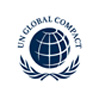 UN Global CompactVisit the website
UN Global CompactVisit the website -
 Principle 7Read more
Principle 7Read morebusinesses should support a precautionary approach to environmental challenges
-

-
 Principle 9Read more
Principle 9Read moreencourage the development and diffusion of environmentally friendly technologies
-
ICMMVisit the website
-
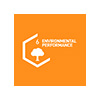
-
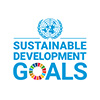 UN SD GoalsVisit the website
UN SD GoalsVisit the website -
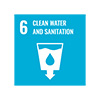
-
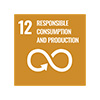
-
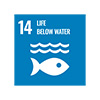
-
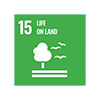
Reports archive
Important notice
This material contains statements that are, or may be deemed to be, “forward-looking statements” which are prospective in nature. By their nature, forward-looking statements involve known and unknown risks, uncertainties and other factors which may cause actual results, performance or achievements to differ materially from any future event, results, performance, achievements or other outcomes expressed or implied by such forward-looking statements. Important factors that could impact these uncertainties include (without limitation) those disclosed in the section entitled “Important notice” and the risk management section of our latest Half-Year Report and/or Annual Report (which can each be found on our website).
Certain statistical and other information included in this material is sourced from publicly available third-party sources. This information has not been independently verified and presents the view of those third parties, and may not necessarily correspond to the views held by Glencore and Glencore expressly disclaims any responsibility for, or liability in respect of, and makes no representation or guarantee in relation to, such information (including, without limitation, as to its accuracy, completeness or whether it is current). In preparing this information, Glencore has also made certain estimates and assumptions that may affect the information presented.
Certain information is derived from management accounts, is unaudited and based on information Glencore has available to it at the time. Figures throughout this material are subject to rounding adjustments. The information presented is subject to change at any time without notice and we do not intend to update this information except as required. Subject to any terms implied by law which cannot be excluded, Glencore accepts no responsibility for any loss, damage, cost or expense (whether direct or indirect) incurred by any person as a result of any error, omission or misrepresentation in information presented.

